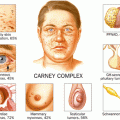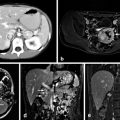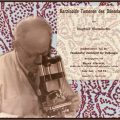Theodor Billroth. Eigenbesitz, (Auschnitt) Salkammergut 1892, fotograf Erich Conrad
The second half of the nineteenth century was a period of tremendous advancement in surgery and a transition of the profession into the modern age . Leading this charge was the legendary Theodor Billroth. In an illustrious career spent in Berlin, Zurich, and Vienna, Billroth pioneered the field of gastrointestinal surgery, making innumerable technical and scientific contributions and training many future leaders who would go on to spread his teachings worldwide. Several of the principles and techniques he first put forth are still taught today, and the standard reconstruction after gastrectomy still bears his name. Despite his many triumphs in gastrointestinal surgery, an area that bedeviled Billroth for much of his career was surgery of the thyroid gland. The modern-day endocrine surgeon can learn much from the negative experiences of one of the true giants of surgery.
Christian Albert Theodor Billroth was born in 1829 in the town of Bergen auf Rügen, in the Kingdom of Prussia [1]. He attended medical school in Germany, at the University of Greifswald, and remained in Germany for his first surgical faculty position at the University of Berlin [1]. He became professor of surgery in short order, joining the faculty at the University of Zurich in 1860 and assuming the position of director of the surgery department there [1]. Billroth’s greatest surgical successes would come during his nearly three decades at the University of Vienna, where in 1867 he was appointed chair of surgery (at the ripe old age of 38) [1]. An impressive list of surgical “firsts” transpired during Billroth’s Austrian tenure; in a single decade, he performed the first successful esophagectomy (1871), laryngectomy (1873), and gastrectomy (1881) [1, 2]. In addition to distinguishing himself as both a surgeon and scientist, Billroth was prominent in the cultural arena. He was an accomplished pianist and violinist, and a longtime friend and colleague of the composer Johannes Brahms [3]. Billroth even attempted to apply some of his scientific methods to the study of musicality, devoting time towards the end of his career to defining the cognitive abilities necessary for the appreciation of music.
In the area of thyroid surgery, however, Billroth’s record was largely one of ignominy. While Billroth was able to push the boundaries of surgery in other areas of the body, his attempts at safe resection of the thyroid gland were decidedly in keeping with other surgeons of the era: fraught with complications and an exceedingly high mortality rate. Writing in 1866, US surgeon Samuel Gross referred to thyroid surgery as “horrid butchery” and stated emphatically that “no sensible man” would even attempt it [4]. Billroth had set out early in his career to pioneer the removal of goiter. During his time in Zurich, in the 1860s, he noted the high incidence of endemic goiter in the local population and began performing operations to remove these enlarged thyroid glands [2]. Of the first 20 patients in whom he attempted resection, 8 died, mostly from sepsis [2, 5]. In addition, many suffered tetany , a perhaps unsurprising result since the presence and function of the parathyroid glands had yet to be established [6]. Disheartened by these poor results, Billroth stopped performing thyroidectomies and only resumed several years later, once he had established himself in Vienna. He wrote honestly and unflinchingly about his negative initial attempts at thyroidectomy :
On carefully reviewing the results of my experience, I have come to the following conclusions…much less favorable in its results is the operation for completely removing deep-seated substernal or unilateral [goiters] accompanied by a high degree of dyspnea; even in cases in which the operation is immediately successful in saving life, the ultimate result is frequently unfavorable. [7]
When Billroth later resumed thyroid operations after moving to Vienna, he was able to eventually reduce the mortality rate from the initial 40 % seen in Zurich; between 1877 and 1881, he performed 48 thyroidectomies with a more acceptable mortality rate of 8.3 % [2, 4]. He never gained renown for this operation, however, and would remain in the shadow of his former protégé Theodor Kocher of Bern ; Kocher would serve as the true founding father of modern thyroid surgery, eventually receiving the Nobel Prize in 1909 for his contributions (the first surgeon ever awarded this honor) [2].
Stay updated, free articles. Join our Telegram channel

Full access? Get Clinical Tree








